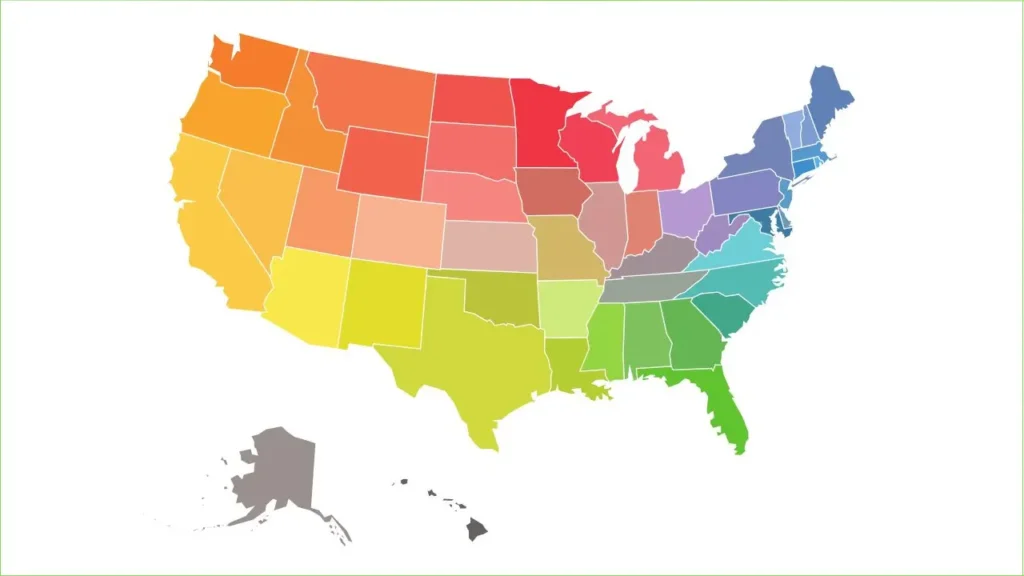The Eastern Time Zone (‘ET) is a time zone used in the seventeen eastern states of the United States, parts of eastern Canada and the state of Quintana Roo in Mexico, Panama in Central America, and the islands of the Caribbean.
UTC Difference
Eastern Standard Time (EST) and Eastern Daylight Time (EDT) are two time zones observed in the Eastern Time Zone of the United States. The main difference between them is the observation of daylight saving time (DST).
Eastern Standard Time (EST) is UTC-5, meaning it’s 5 hours behind Coordinated Universal Time (UTC).
Eastern Daylight Time (EDT) is UTC-4, which is 4 hours behind Coordinated Universal Time (UTC). EDT is observed during the daylight saving period, typically from the second Sunday in March to the first Sunday in November.
| EST UTC | 5:00 |
| EDT UTC | 4:00 |
Time in EST
Time in EDT
Coordinated Universal Time
Observation
Regions that use Eastern Standard Time (EST) are five hours behind UTC.
Eastern Daylight Time (EDT), when using Daylight Saving Time in the spring and summer, is four hours behind UTC.
History of Eastern Time Zone Circle
The Eastern Time Zone (ET) is one of the time zones in North America, covering a significant portion of the eastern United States and parts of eastern Canada. Here’s a concise history of the Eastern Time Zone:
Late 19th Century: Introduction of Time Zones
- Prior to the late 19th century, timekeeping was based on local solar time, which varied significantly from place to place.
- In 1883, the United States and Canada adopted a system of standardized time zones to improve coordination across regions, particularly for transportation and communication networks.
1884: International Meridian Conference
- The International Meridian Conference was held in Washington, D.C., in 1884 to establish a global system of standardized timekeeping.
- The conference selected the Greenwich Meridian (located in Greenwich, London, UK) as the prime meridian, and time zones were defined based on this reference.
Eastern Time Zone Formation:
- The Eastern Time Zone was established as one of the original time zones during the introduction of standardized time in 1883.
- It was centered around the mean solar time of the 75th meridian west of Greenwich.
Daylight Saving Time (DST):
- In the early 20th century, daylight saving time (DST) was introduced as a means of making better use of daylight during the longer days of spring, summer, and early fall.
- DST involves moving the clocks forward by one hour during the warmer months and returning to standard time in the cooler months.
Time Zones in the US
The United States observes a total of 6 standard time zones. However, it’s important to note that some regions within these time zones might observe daylight saving time, leading to variations during different parts of the year.
To provide a general overview of the time zones in the contiguous United States:
- Eastern Time Zone (ET): UTC-5 (EST) / UTC-4 (EDT)
- Central Time Zone (CT): UTC-6 (CST) / UTC-5 (CDT)
- Mountain Time Zone (MT): UTC-7 (MST) / UTC-6 (MDT)
- Pacific Time Zone (PT): UTC-8 (PST) / UTC-7 (PDT)
In addition to the four main time zones, there are two additional time zones:
- Alaska Time Zone (AKT): UTC-9 (AKST) / UTC-8 (AKDT)
- Hawaii-Aleutian Time Zone (HST): UTC-10 (HST) / UTC-9 (HDT)
Regarding Howland Island and Baker Island:
- Howland Island: Howland Island uses Baker Island Time (BIT), which is UTC-12. It’s one of the few places on Earth that is one day ahead of the rest of the world due to its position near the International Date Line.
- Baker Island: Baker Island also uses Baker Island Time (BIT), which is UTC-12.
While these two islands do indeed have a unique time zone, they are unincorporated territories and have limited population and human activity. Therefore, they are not generally included in discussions of the main time zones of the United States.
Countries that use the Eastern time zone
Below are some states that widely use the Eastern time zone –
Canada
The following Canadian provinces and territories are part of the Eastern Time Circle.
- Ontario
- Quebec
- Nunavut
United States of America
The District of Colombia and seventeen other states are located in the Eastern Time Zone.
- Connecticut
- Delaware
- Georgia
- New Jersey
- Maryland
- Massachusetts
- New Hampshire
- Maine
- New York
- North Carolina
- Ohio
- Pennsylvania
- Rhode Island
- South Carolina
- Vermont
- Virginia
- Western Virginia
Six states are divided into Central and Eastern time zones.
- Alabama
- Florida
- Indiana
- Kentucky
- Michigan
- Tennessee
Due to the presence of large areas and politically and economically important cities such as the capital Washington DC and New York, this time is widely used to describe any event in America.
Mexico
It is the easternmost state of Mexico that used Eastern Standard Time for almost 17 years (1982 to 1998). Since then, after using Middle Standard Time, it started using it again on 1 February 2015.
Central America
Panama in Central America also uses Eastern Standard Time UTC – 05:00 throughout the year.
Caribbean Archipelago
The Bahamas, the Cayman Islands, and Haiti officially use Eastern Standard Time in winter and Eastern Daylight Saving Time in summer. Cuba often does the same. The Turks and Caicos Islands also previously used the same time zone, but in 2015 they adopted the Atlantic time zone.




